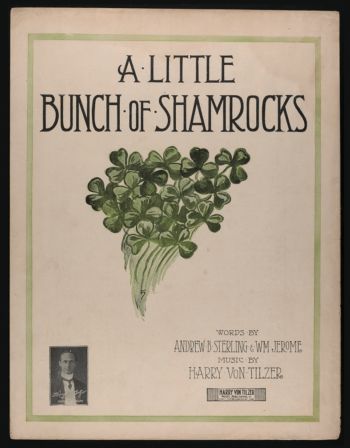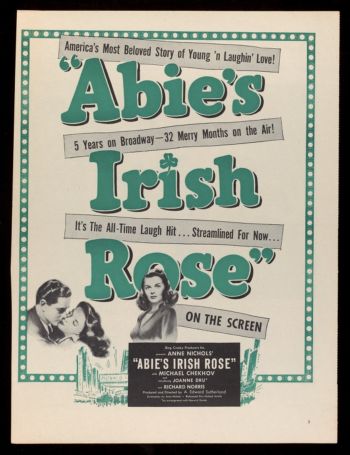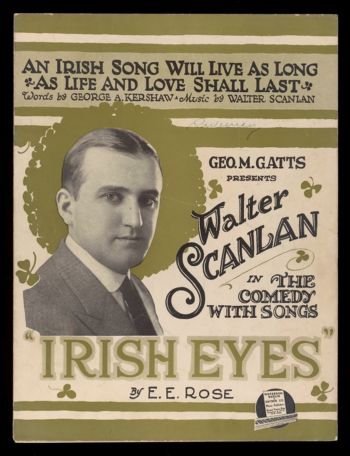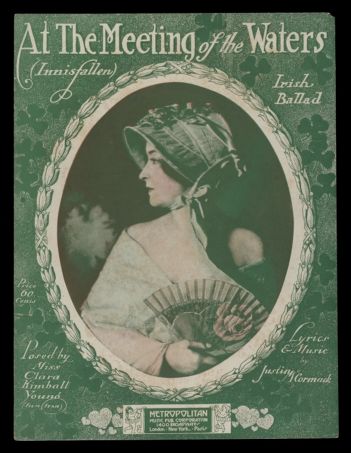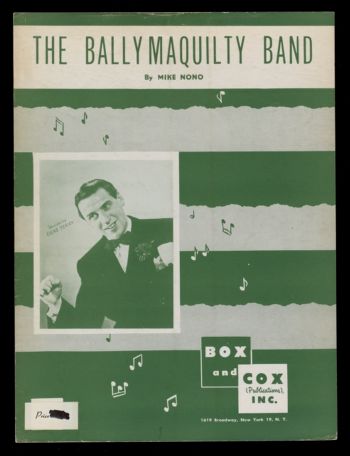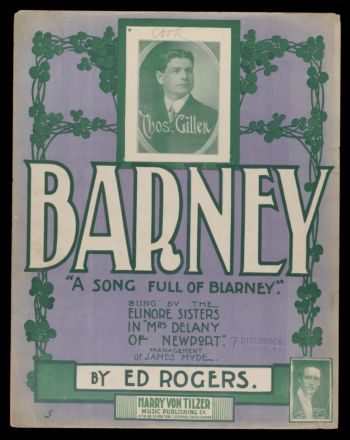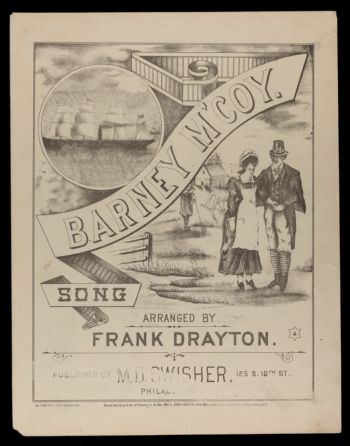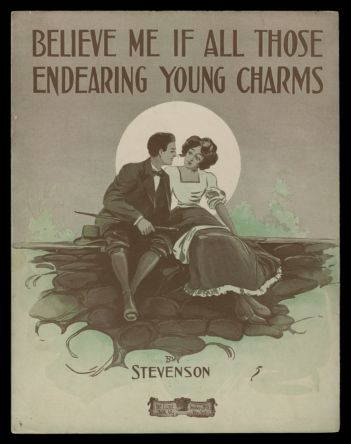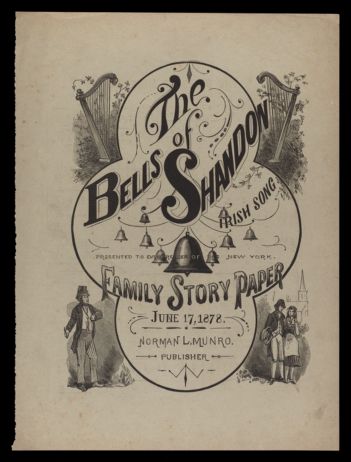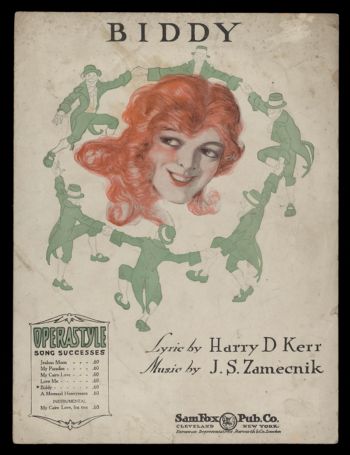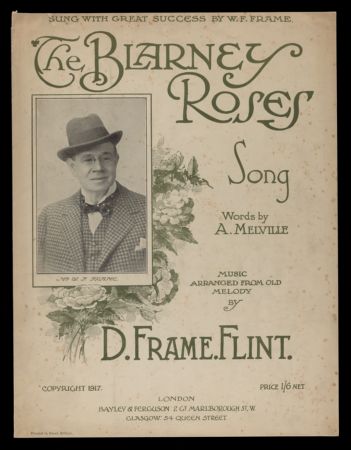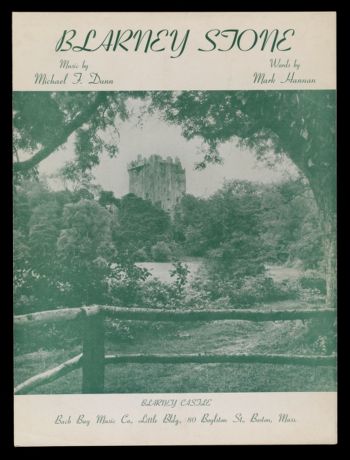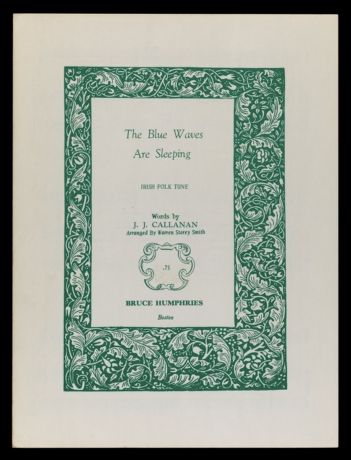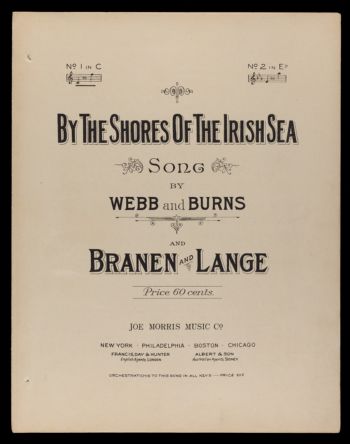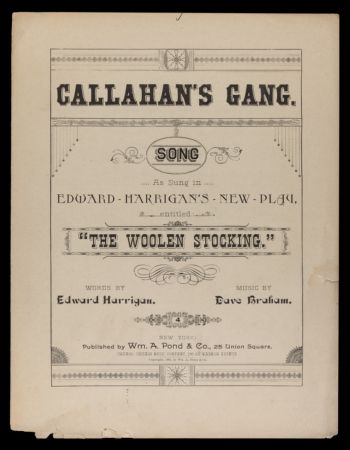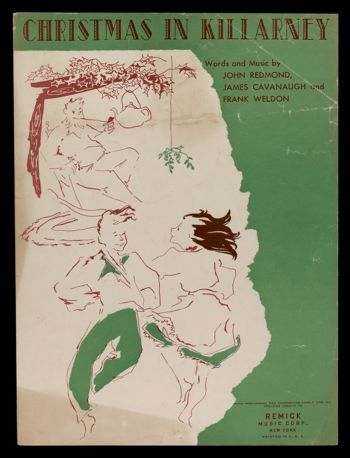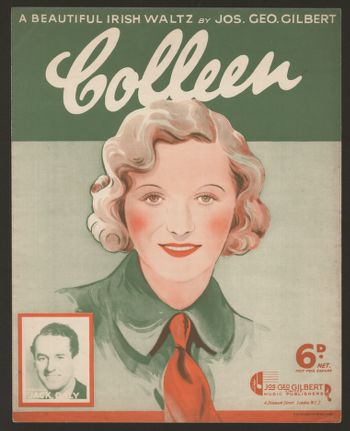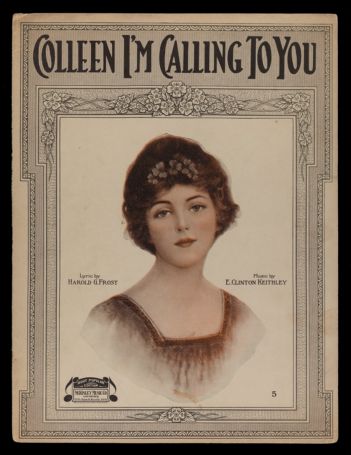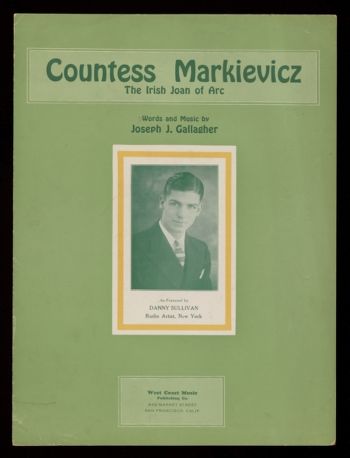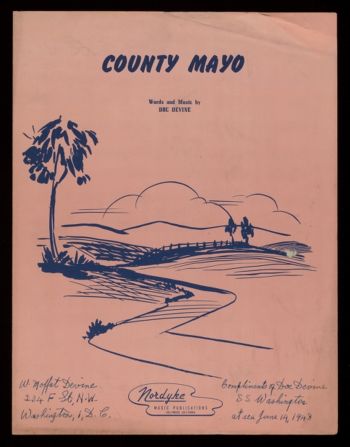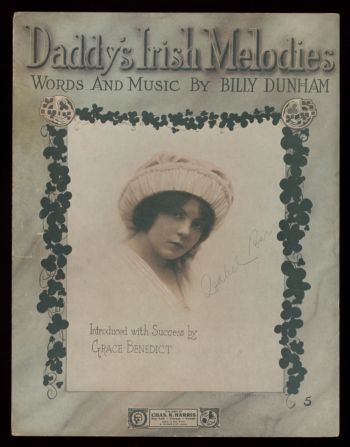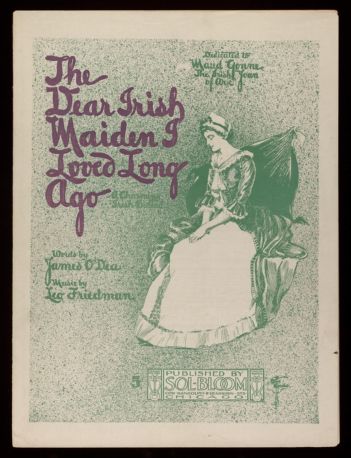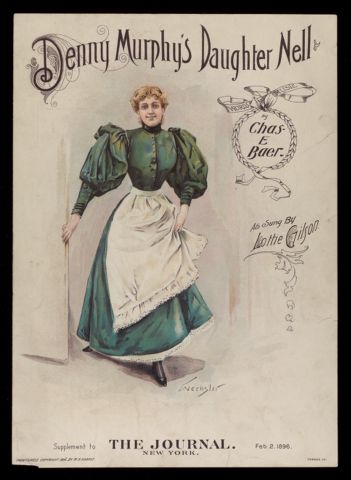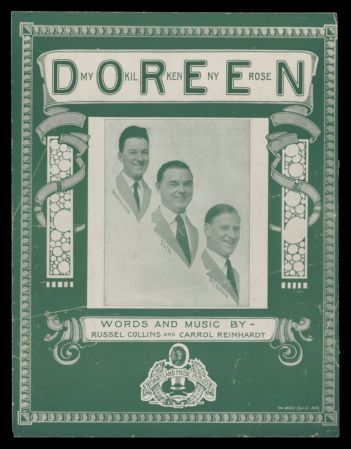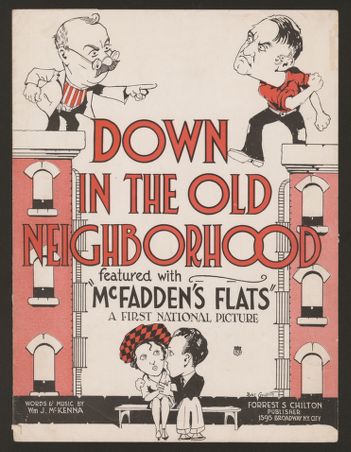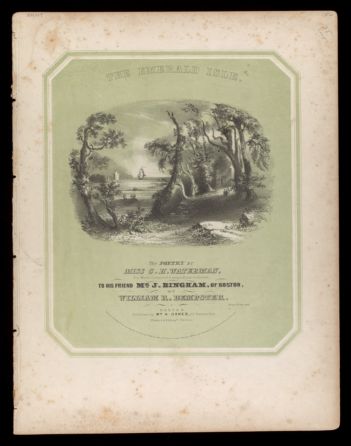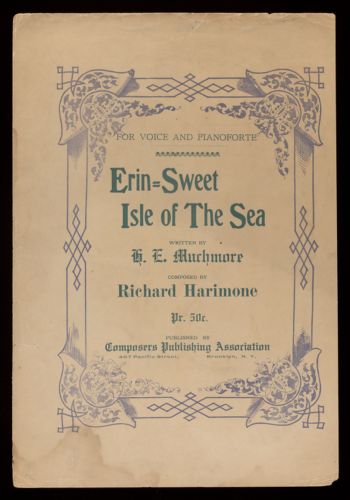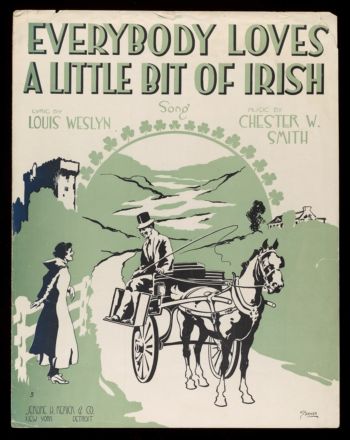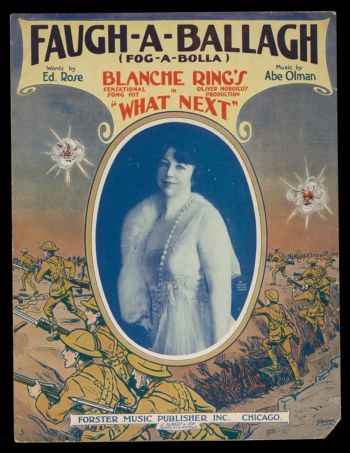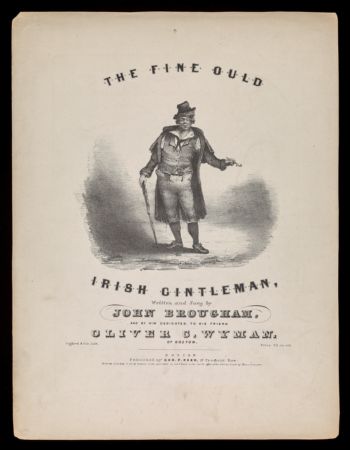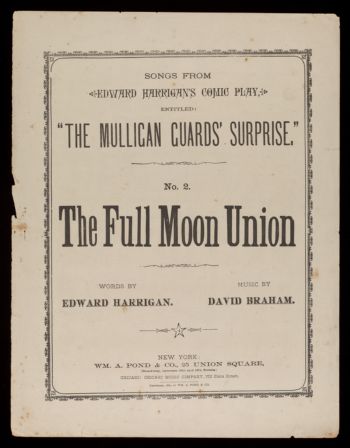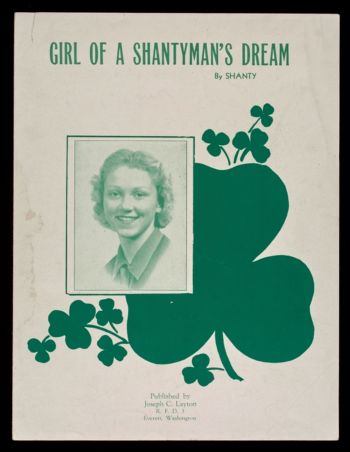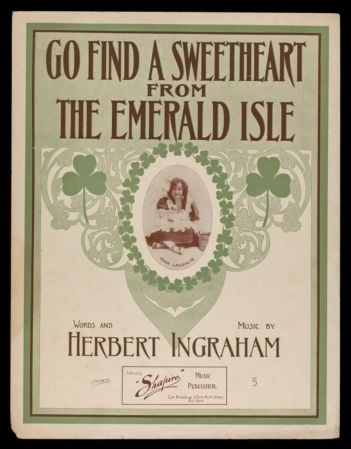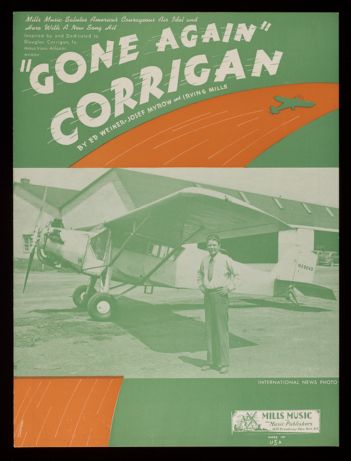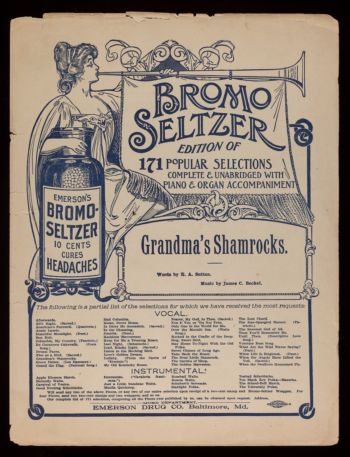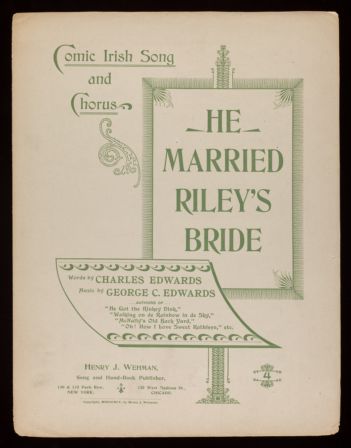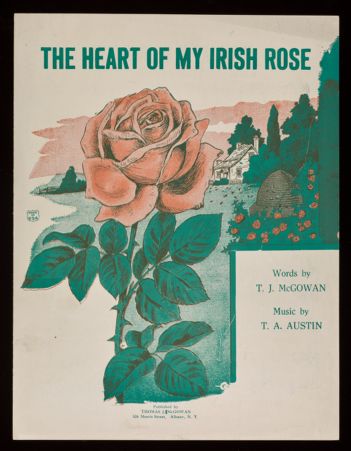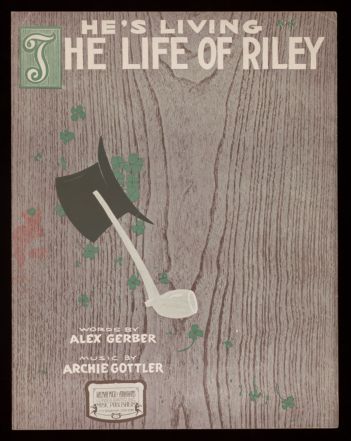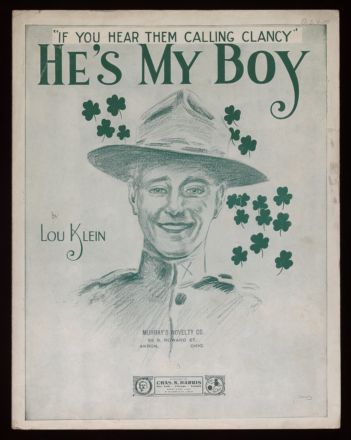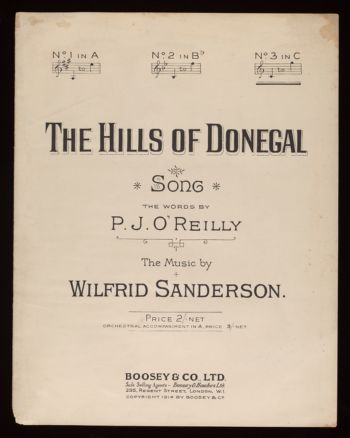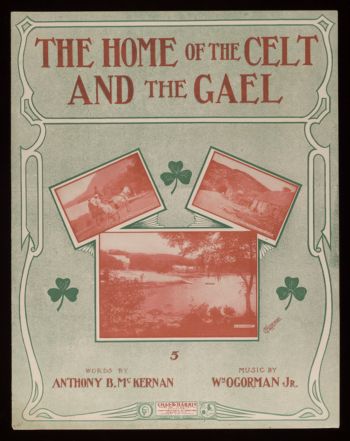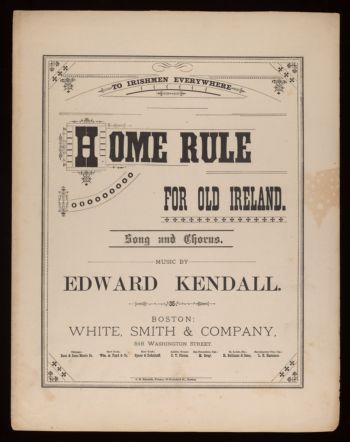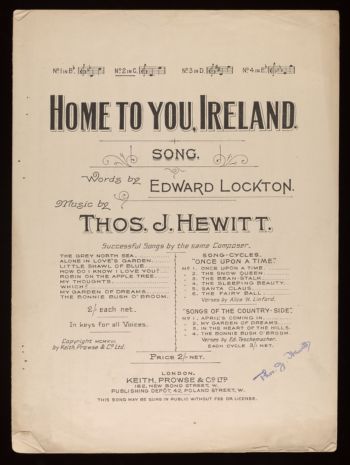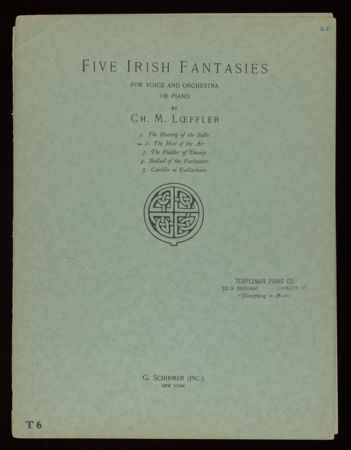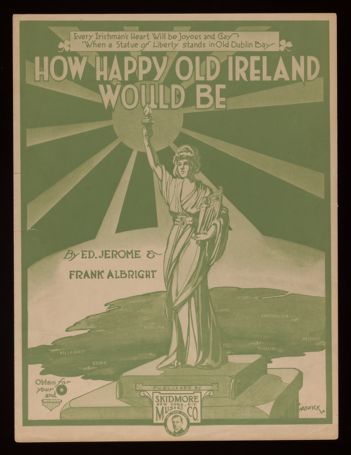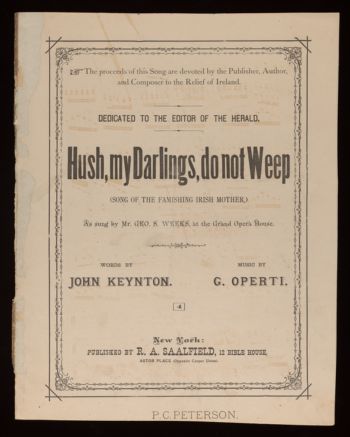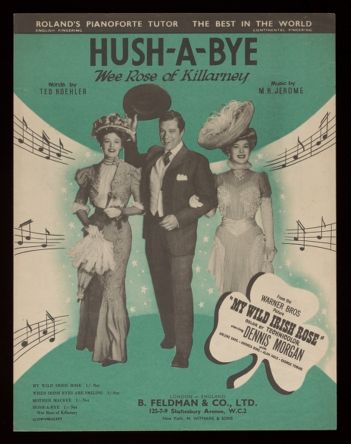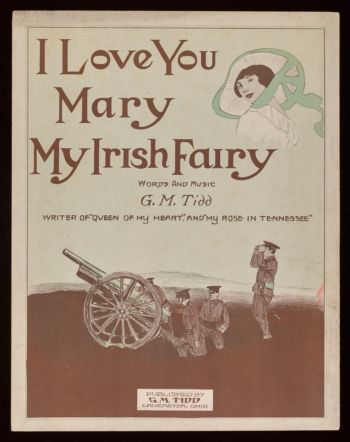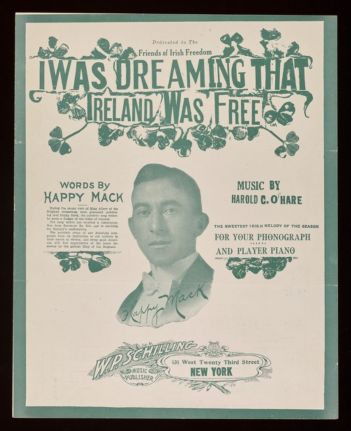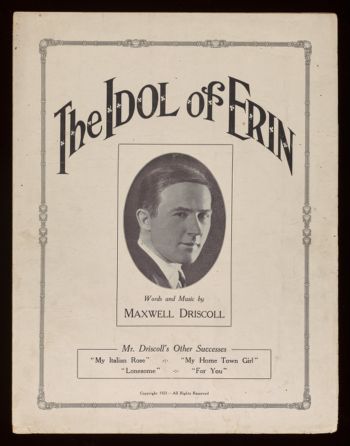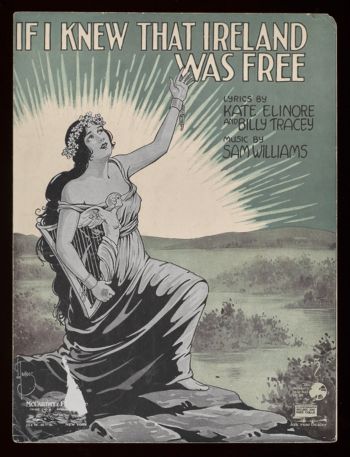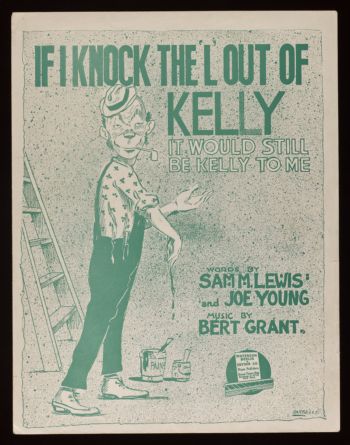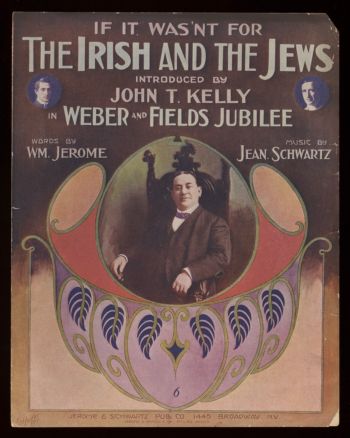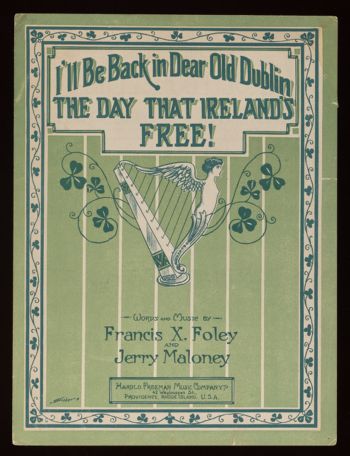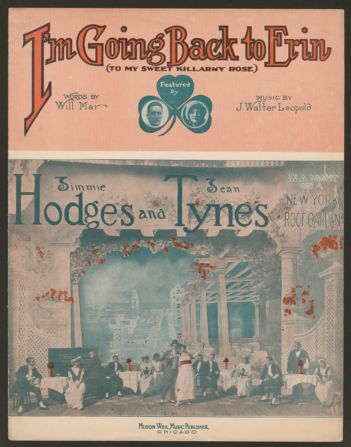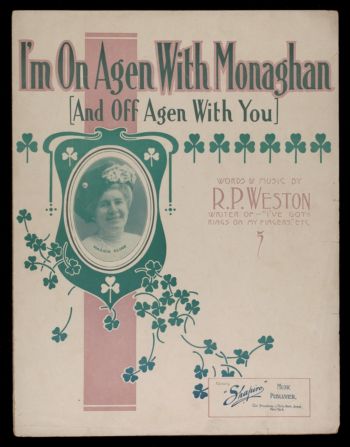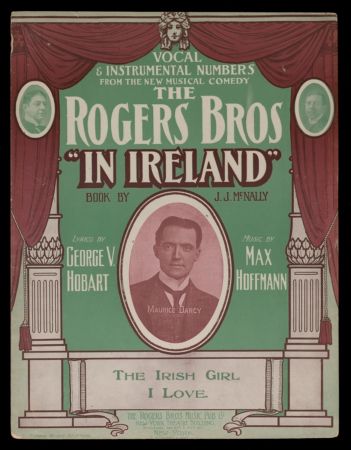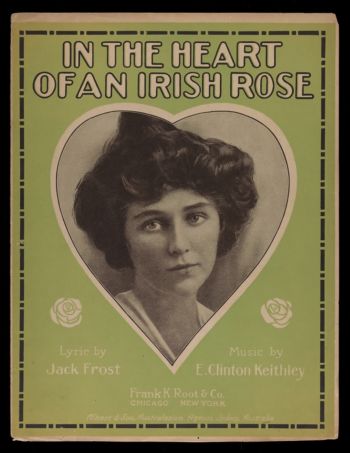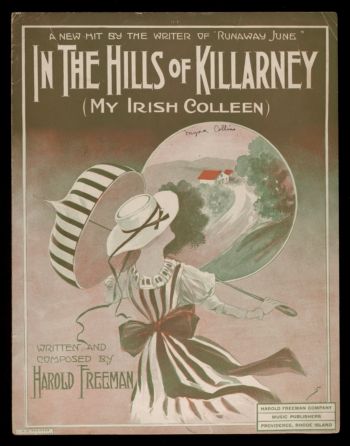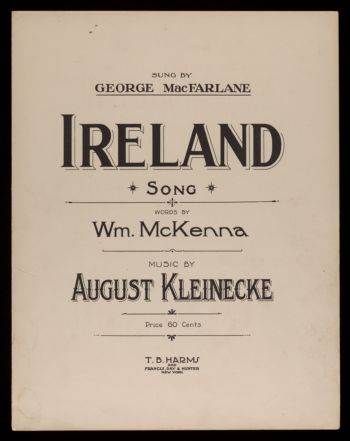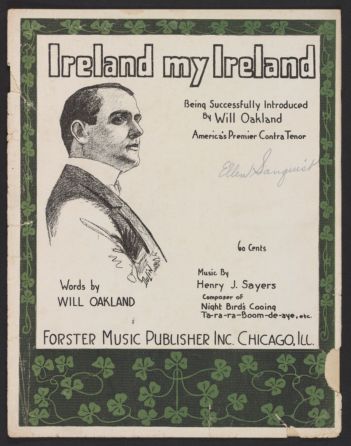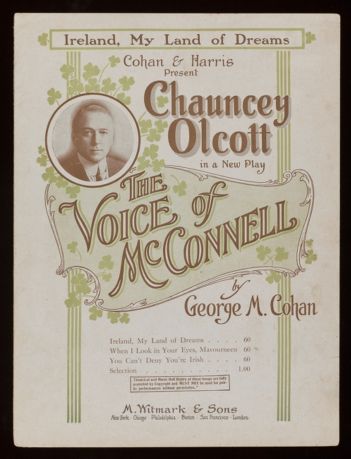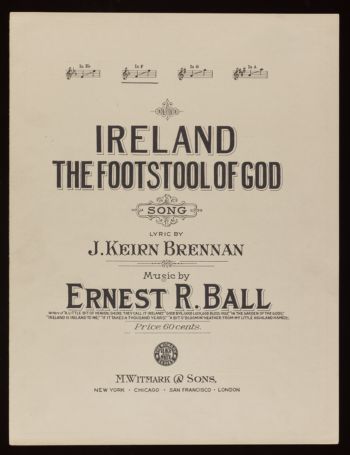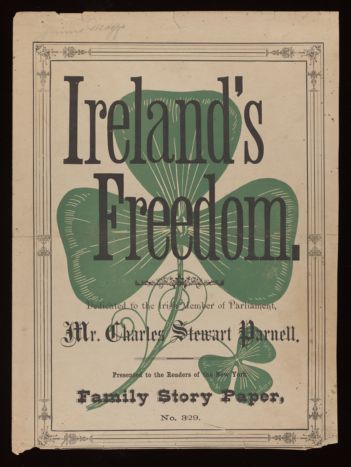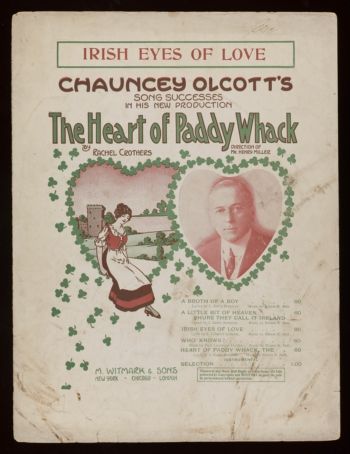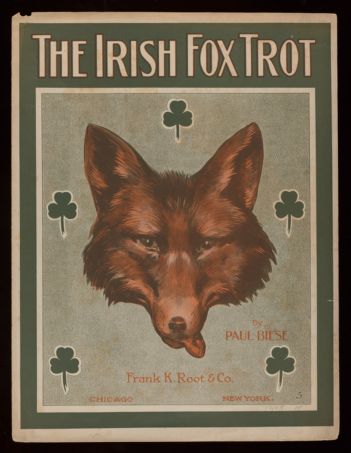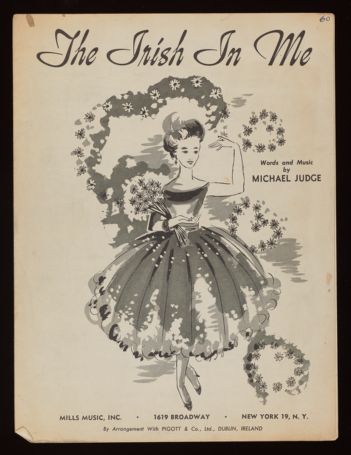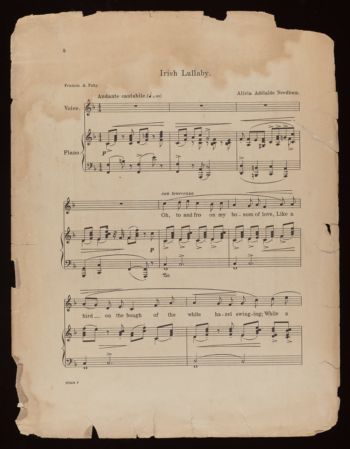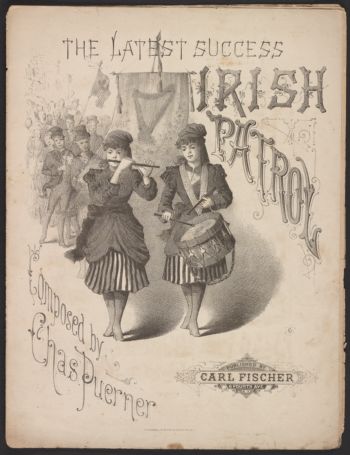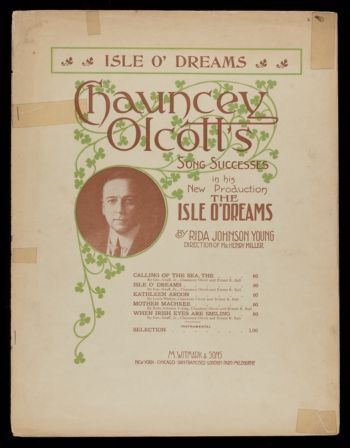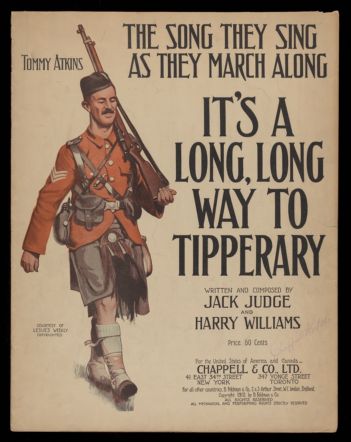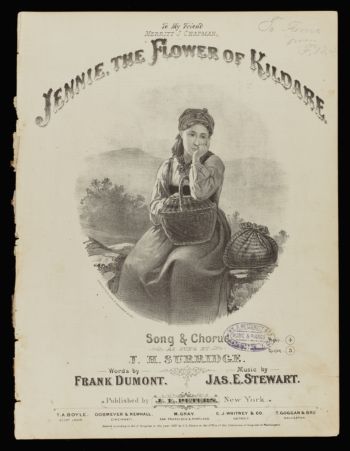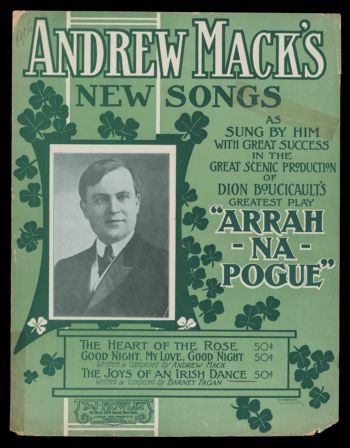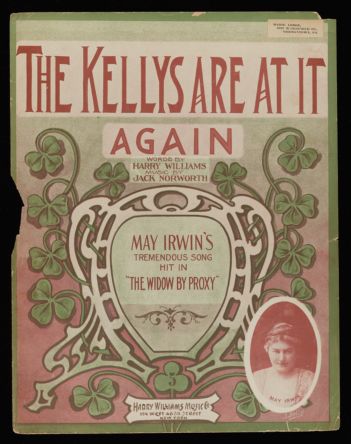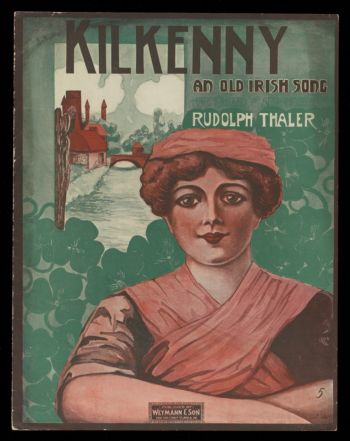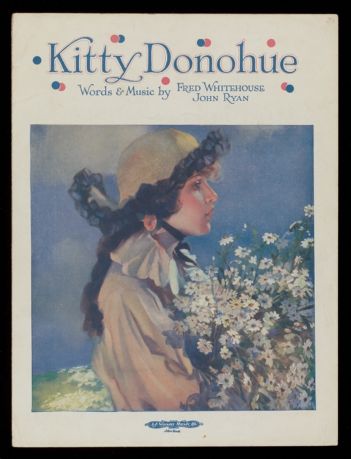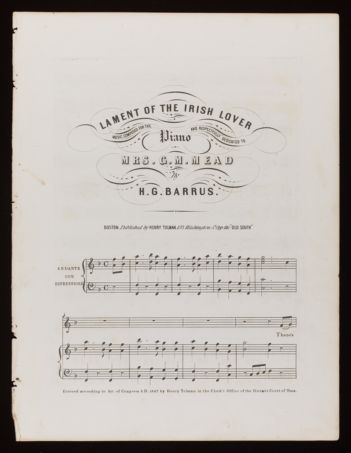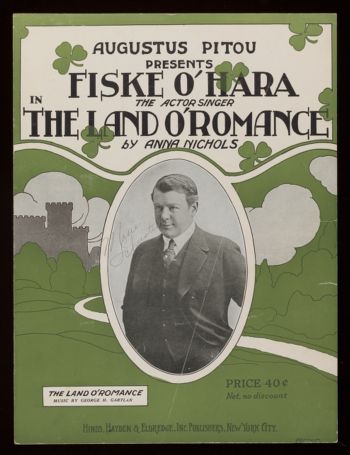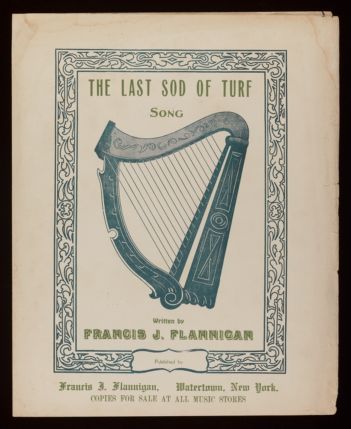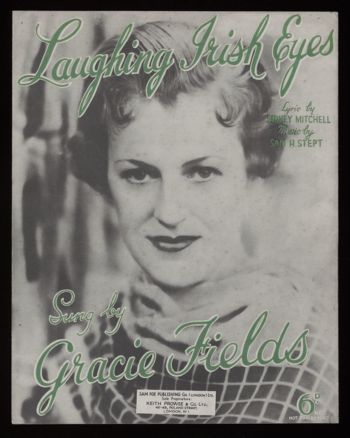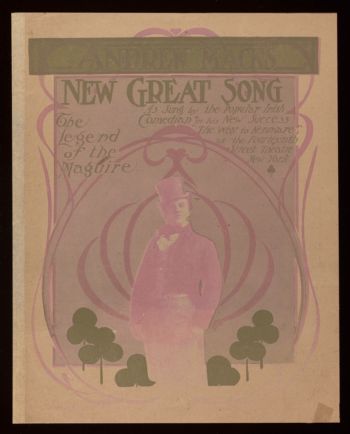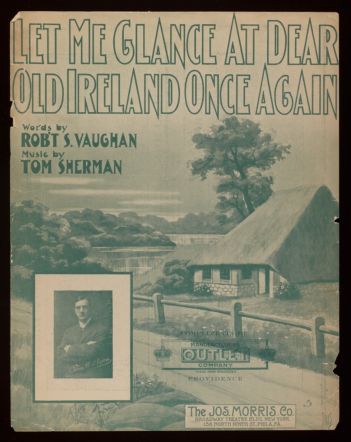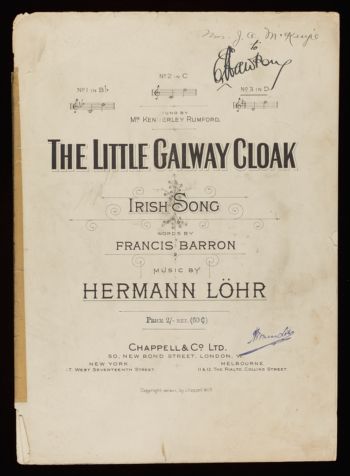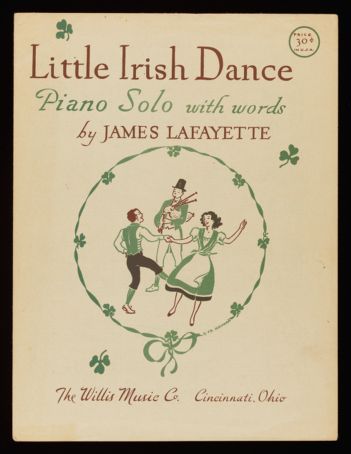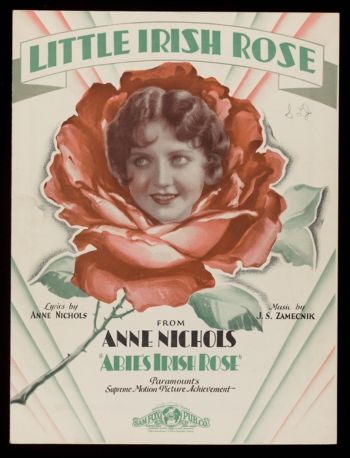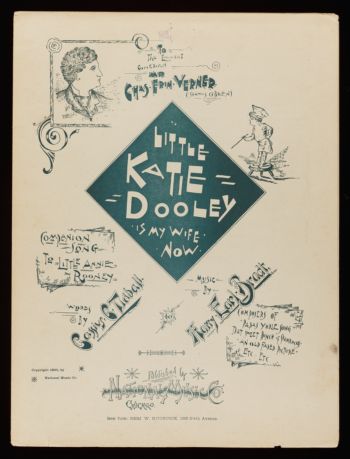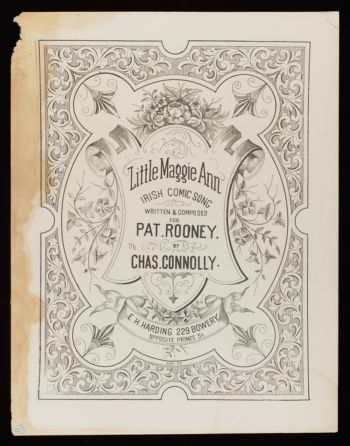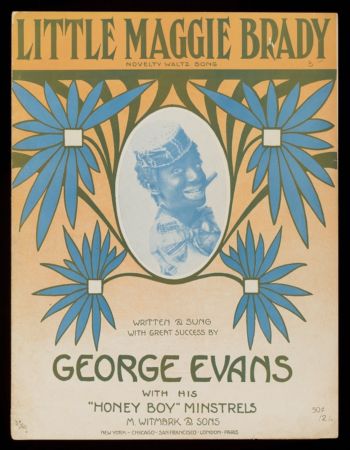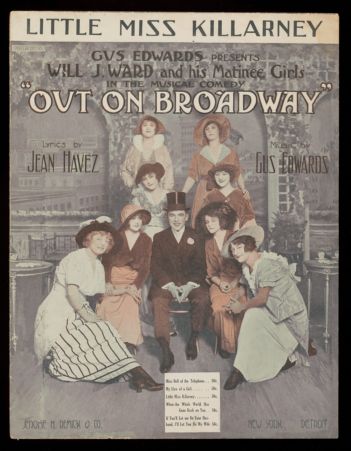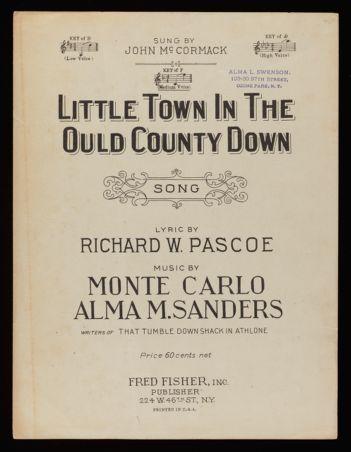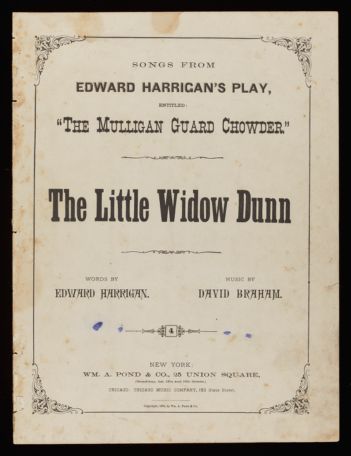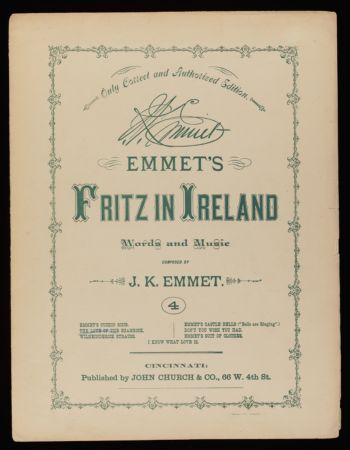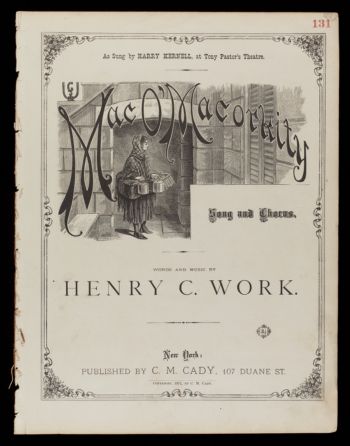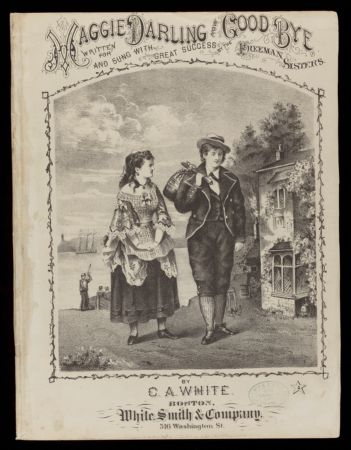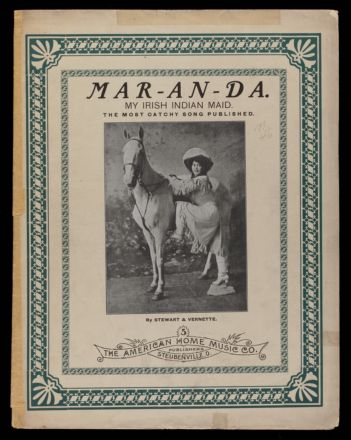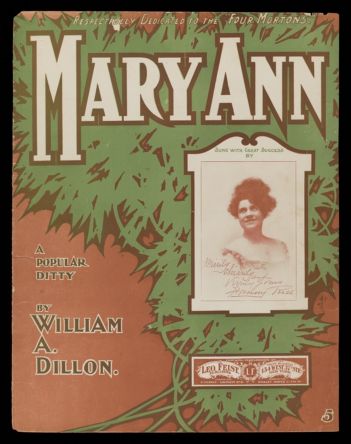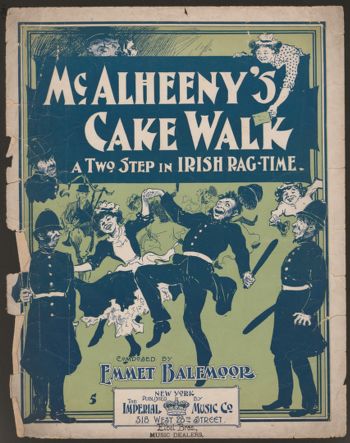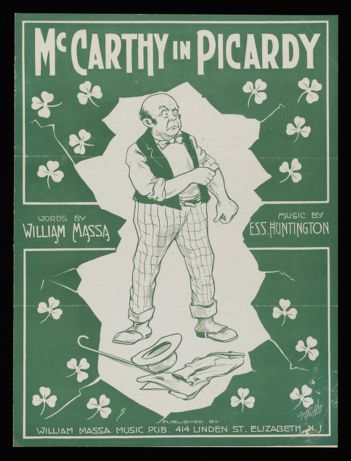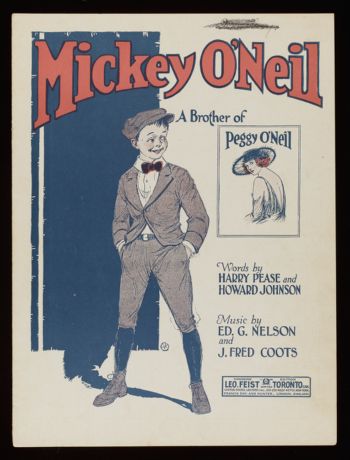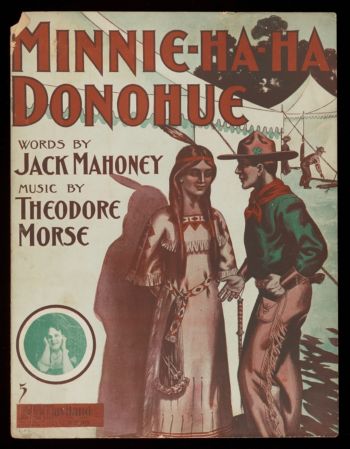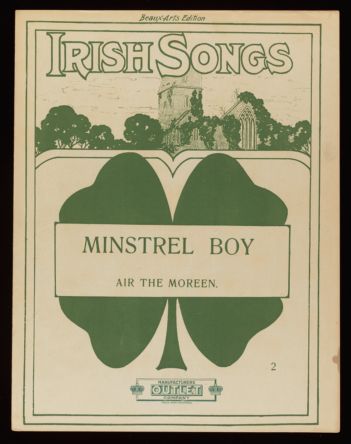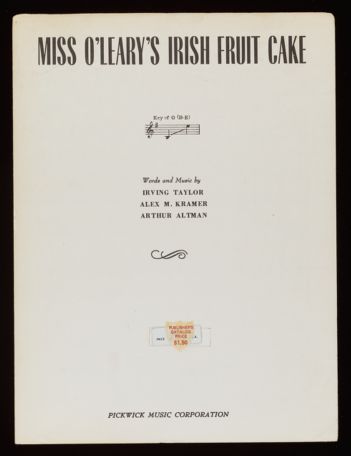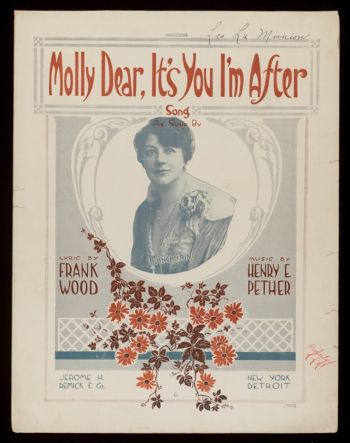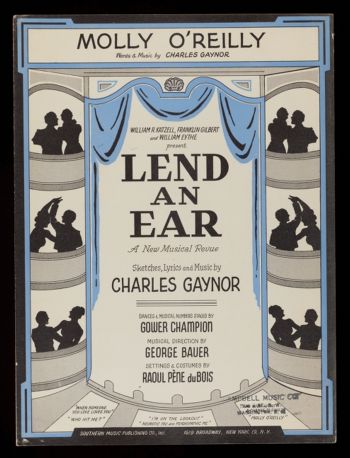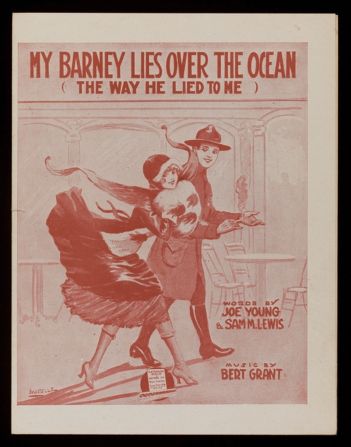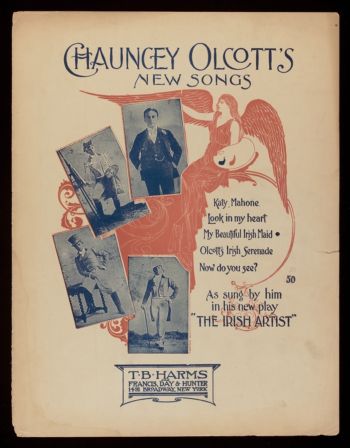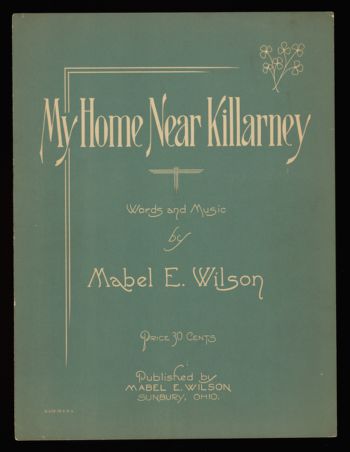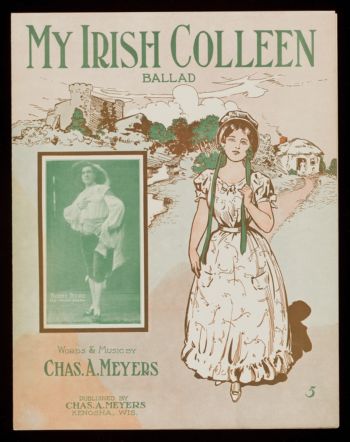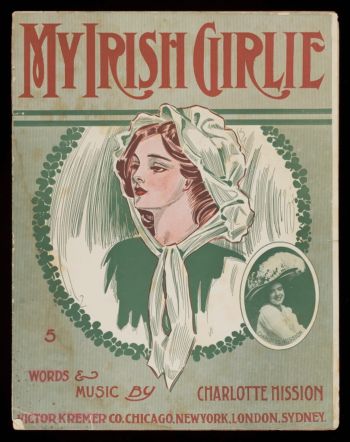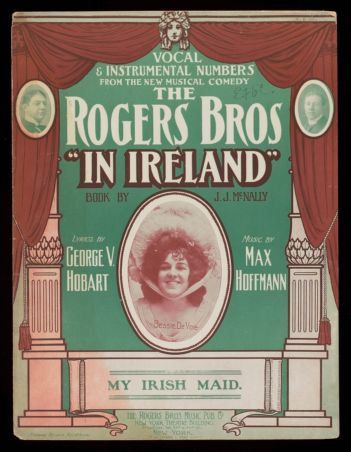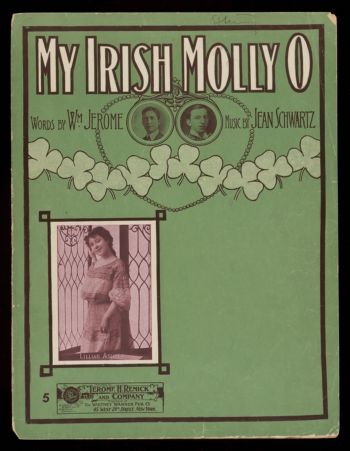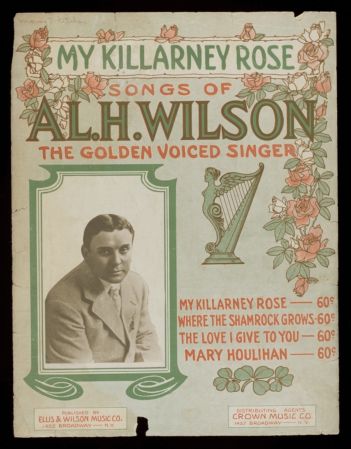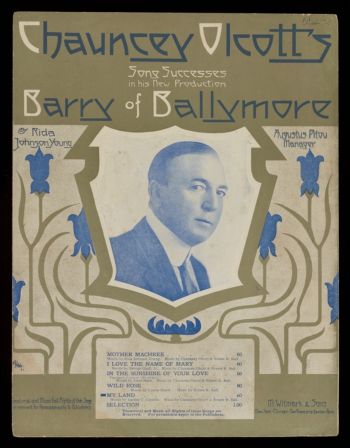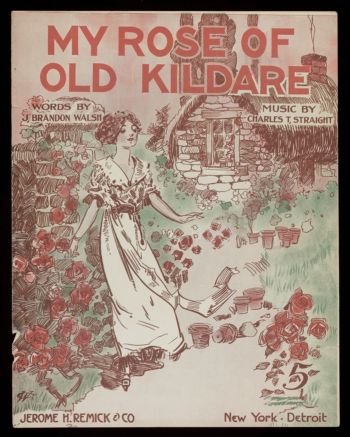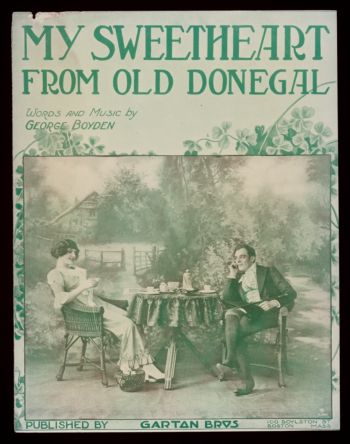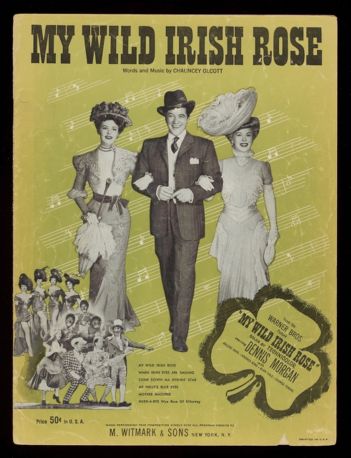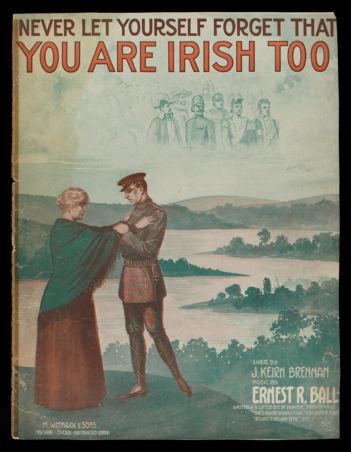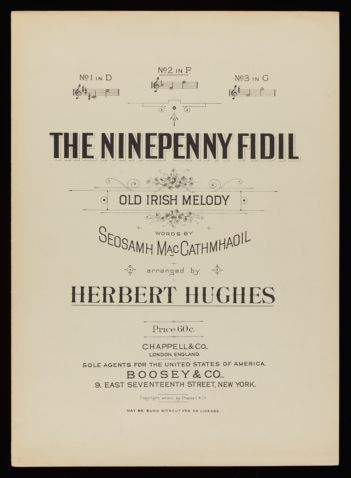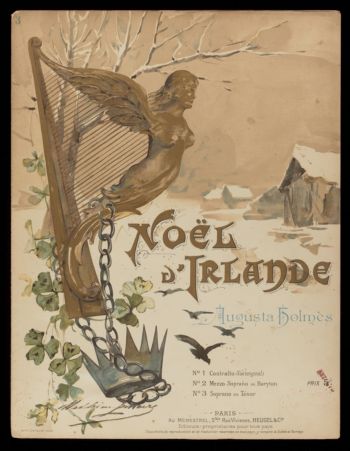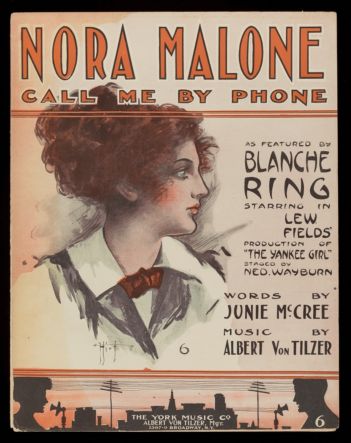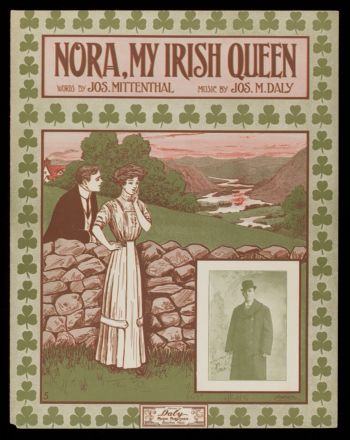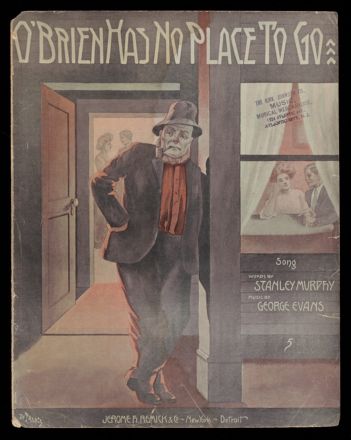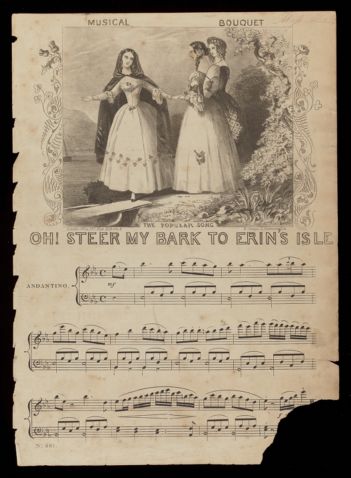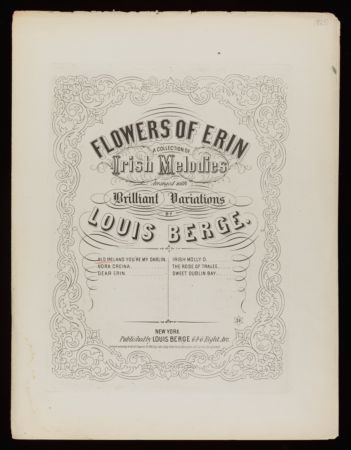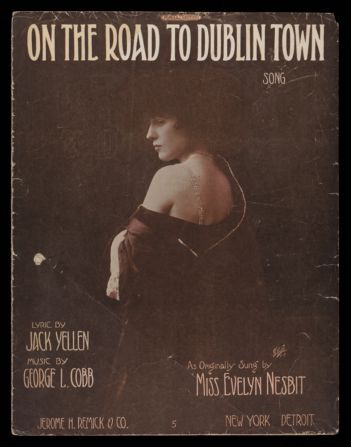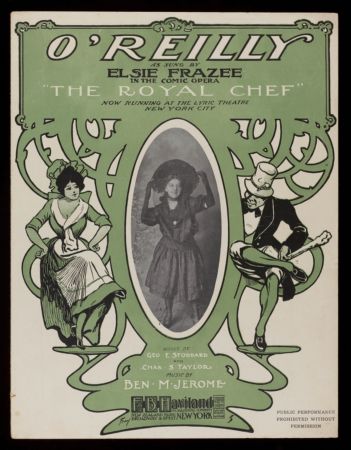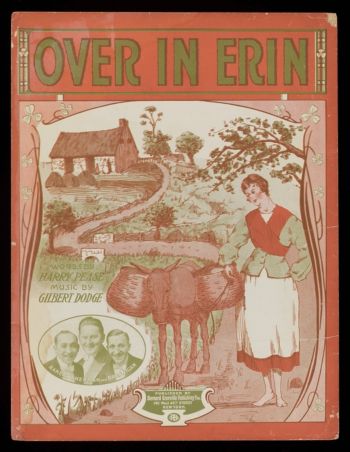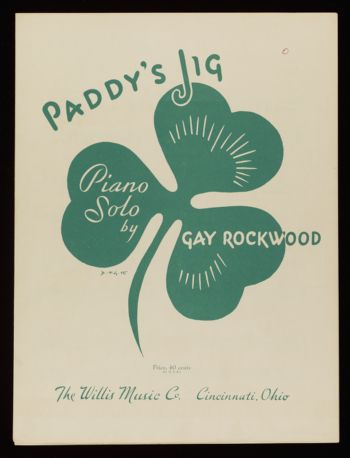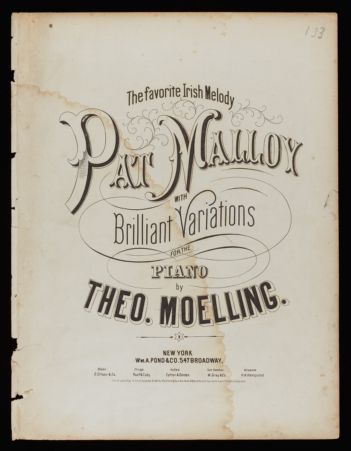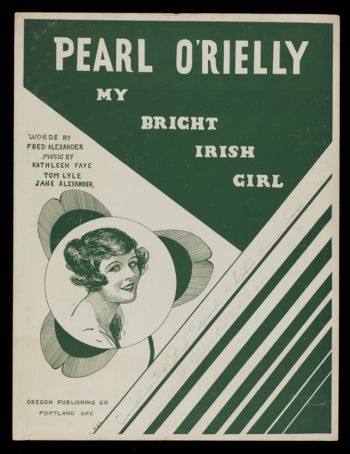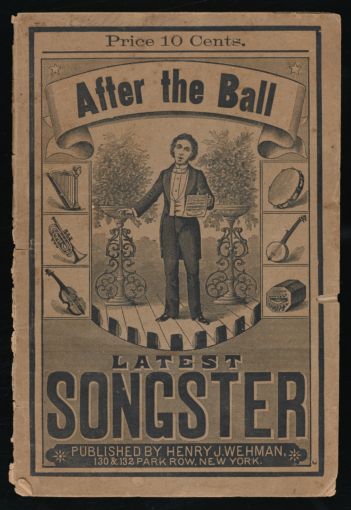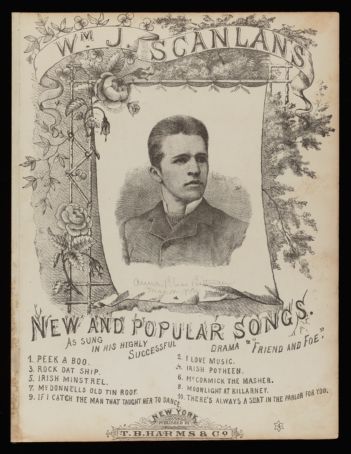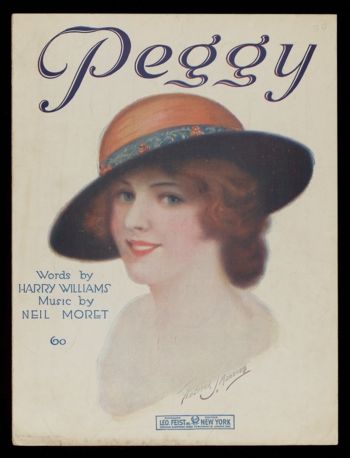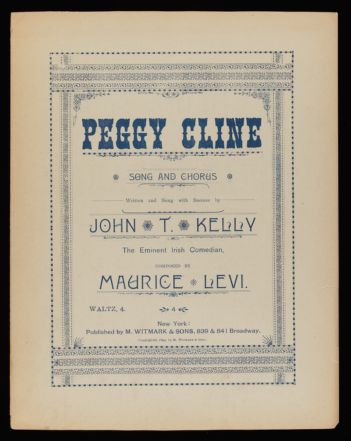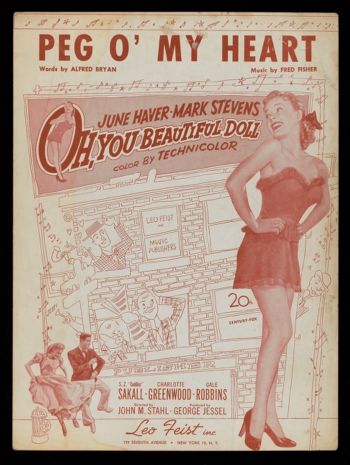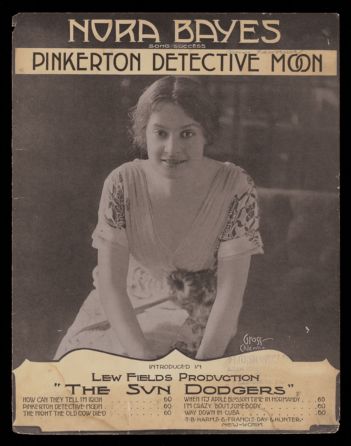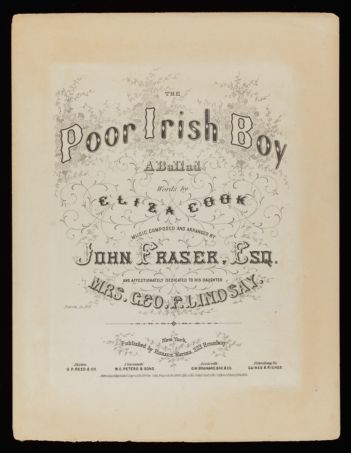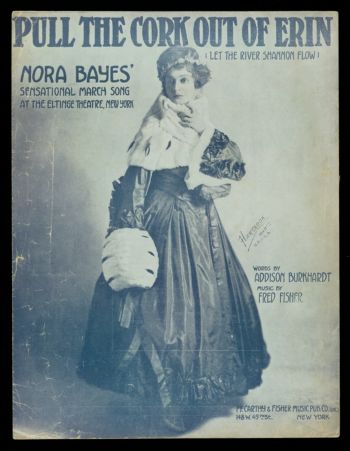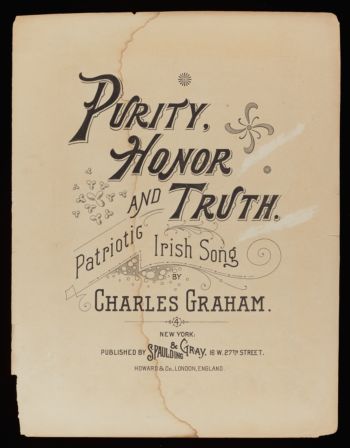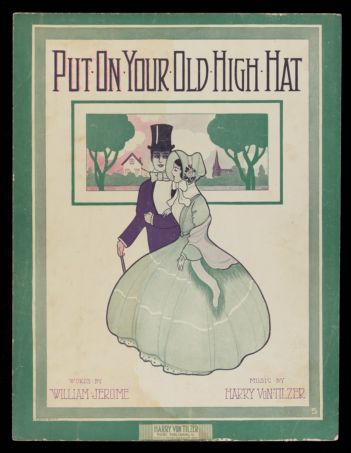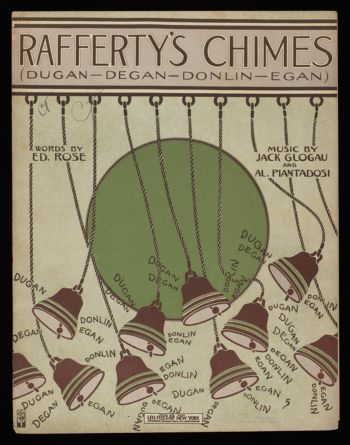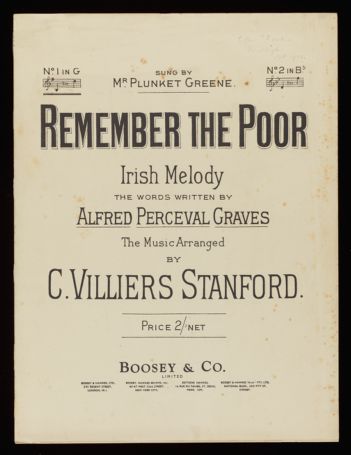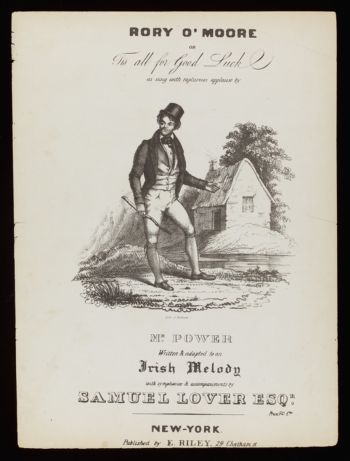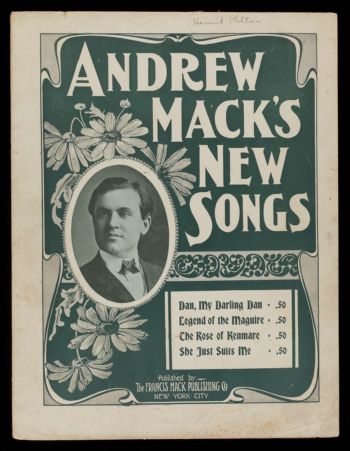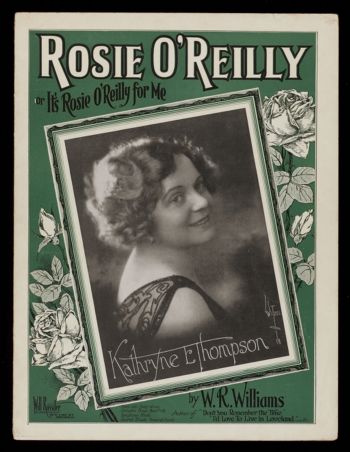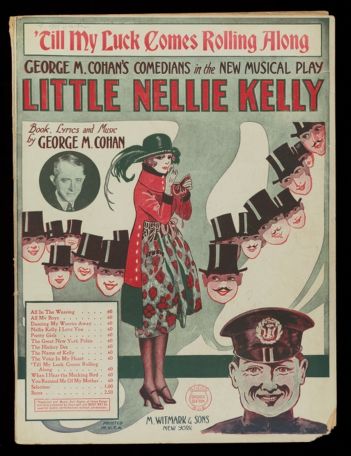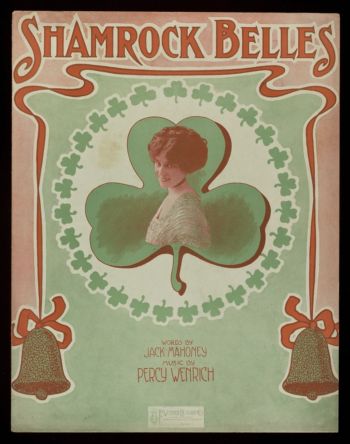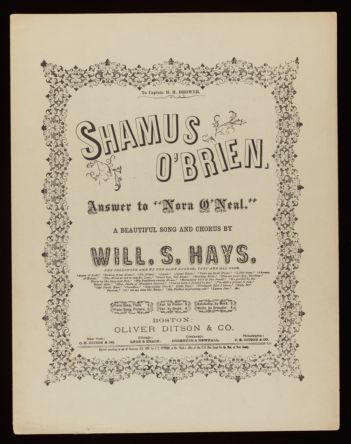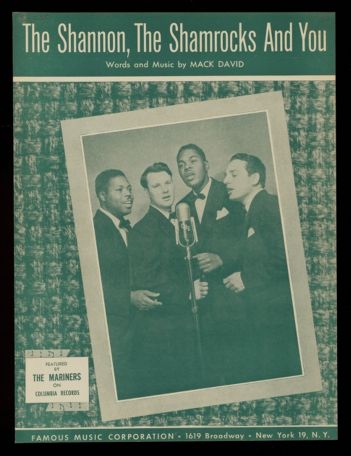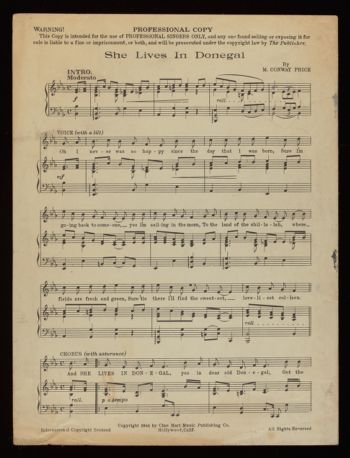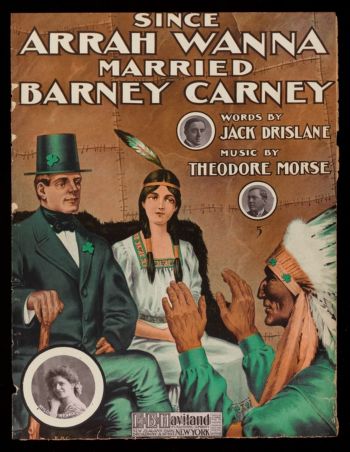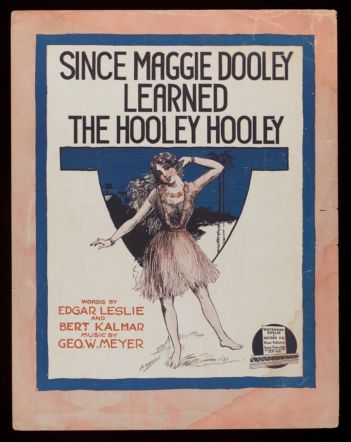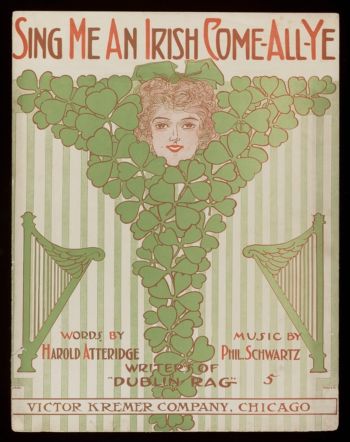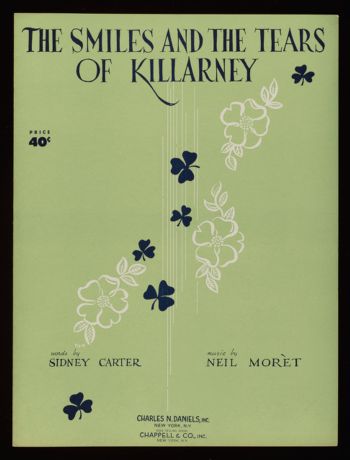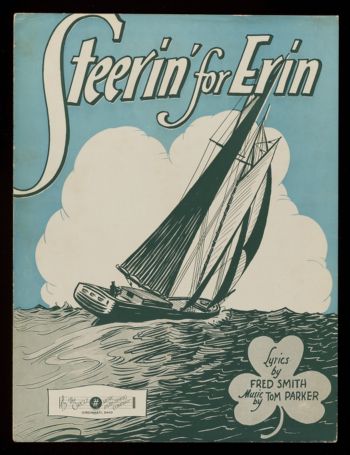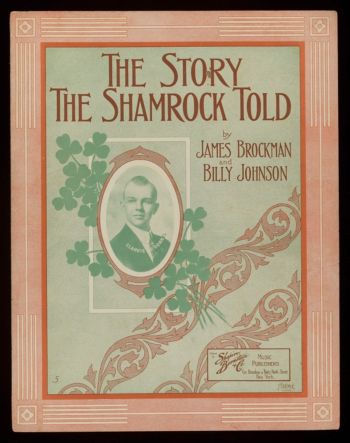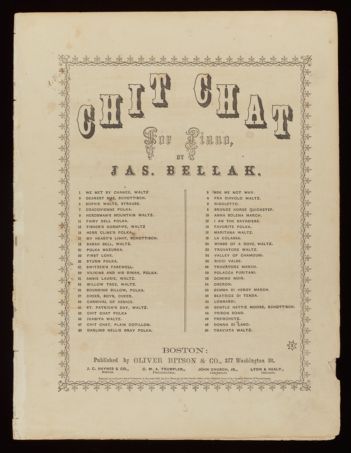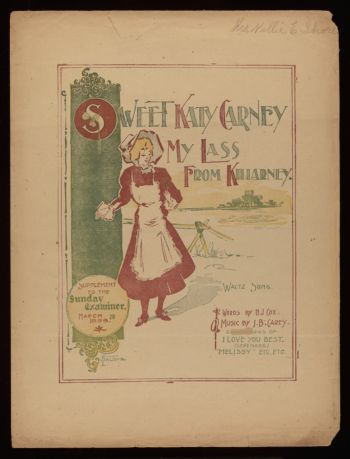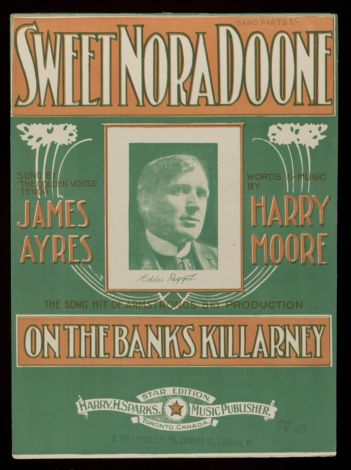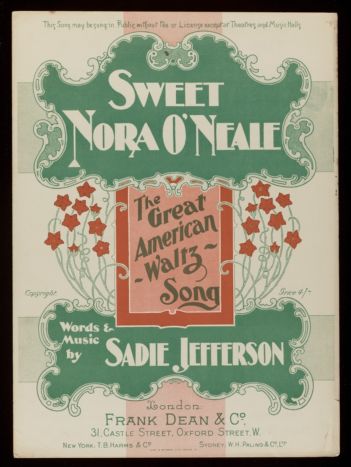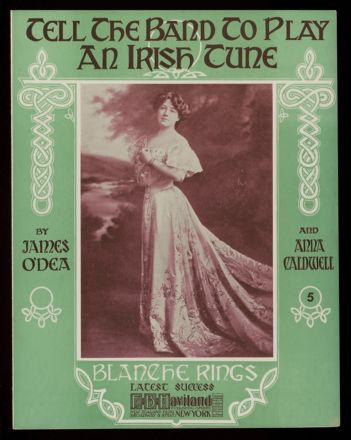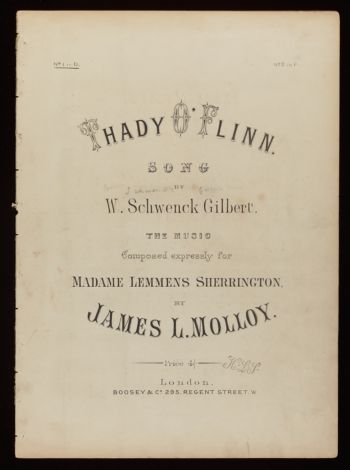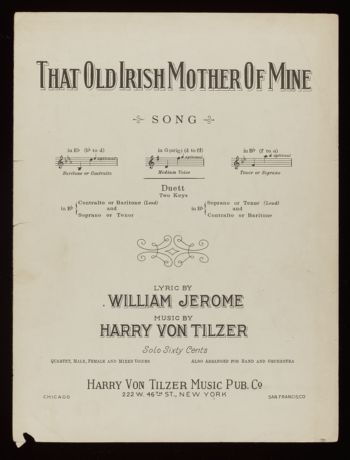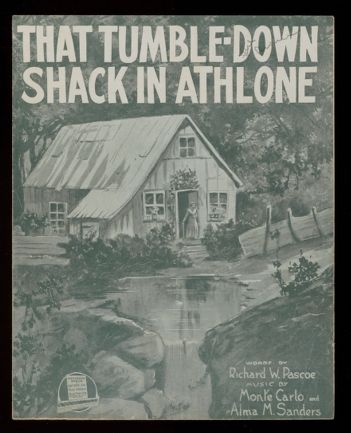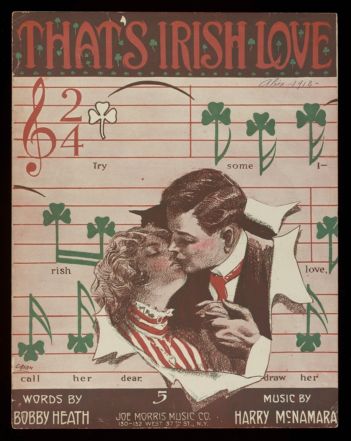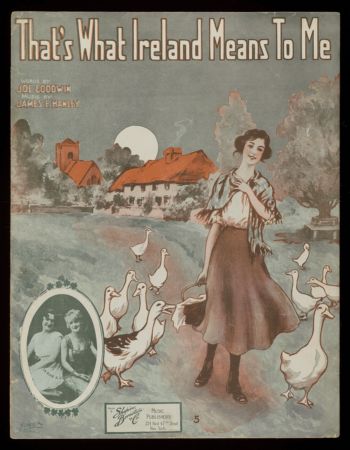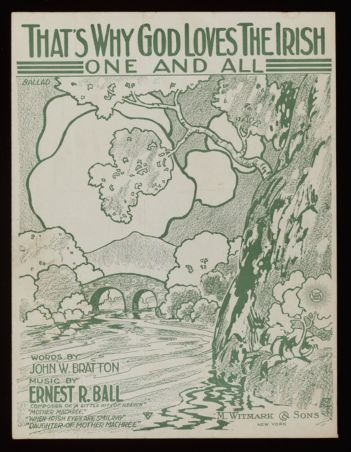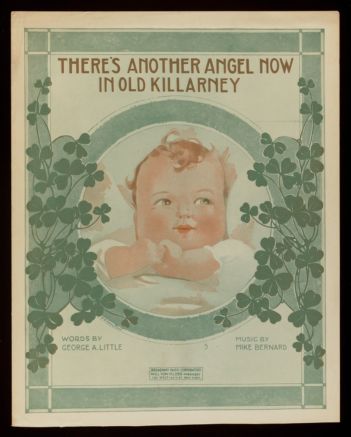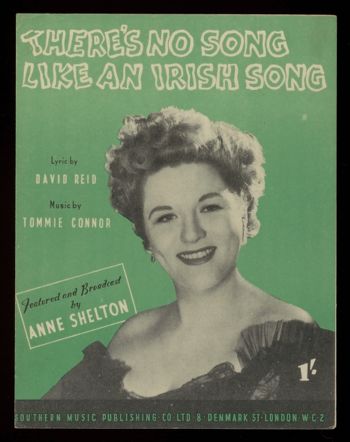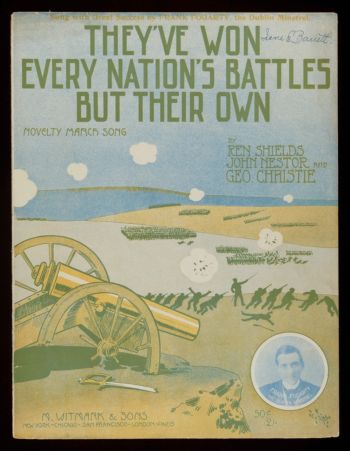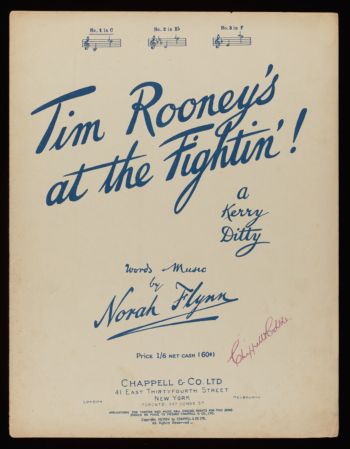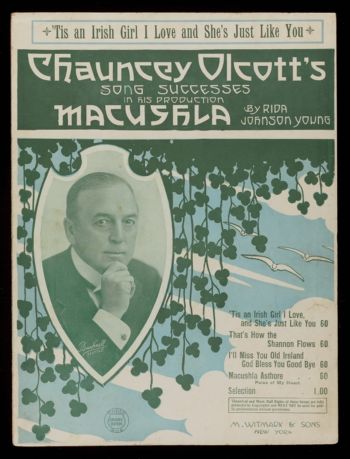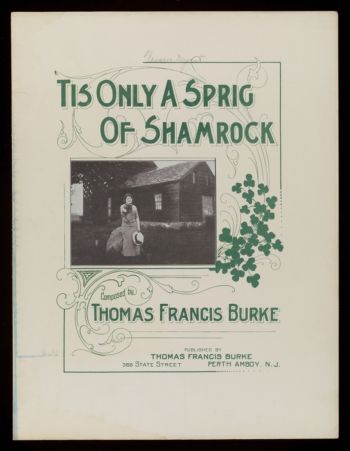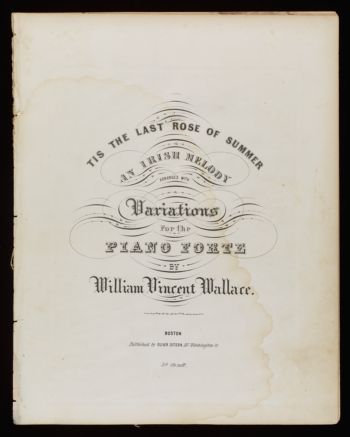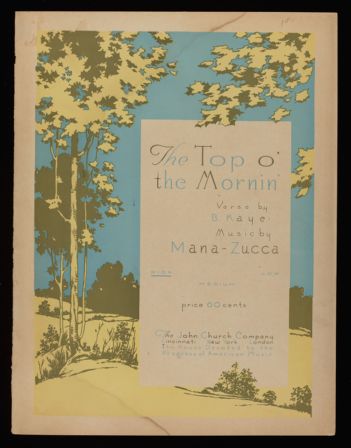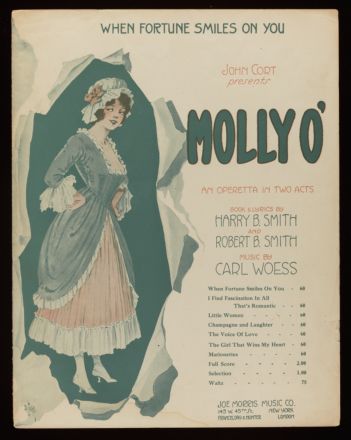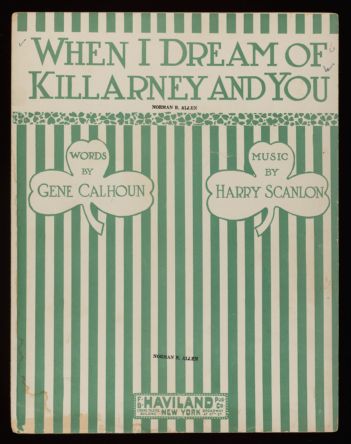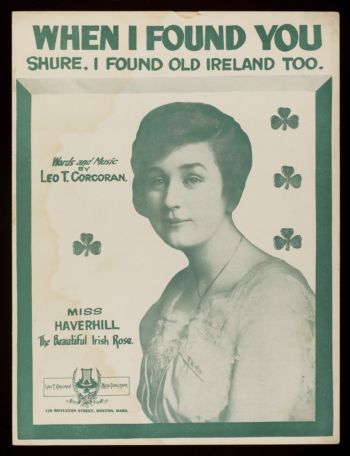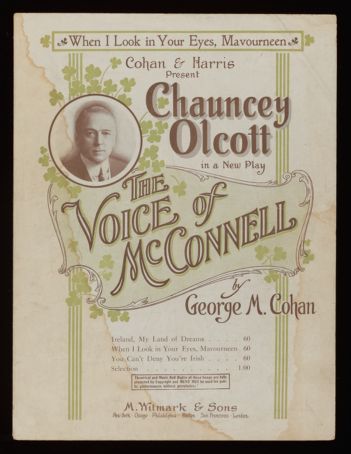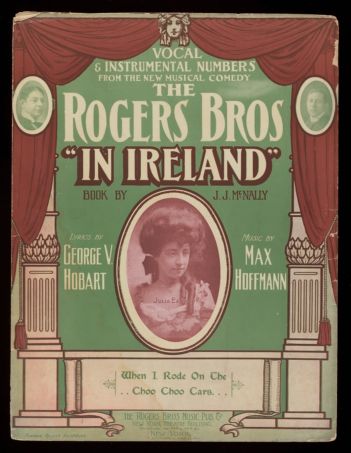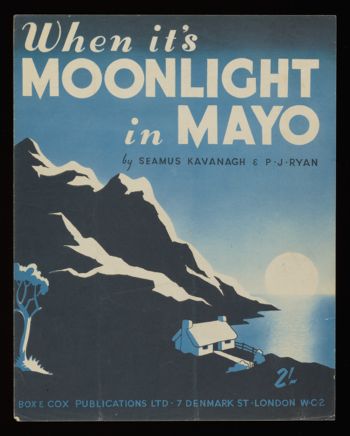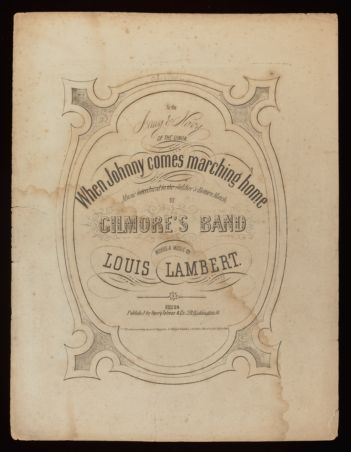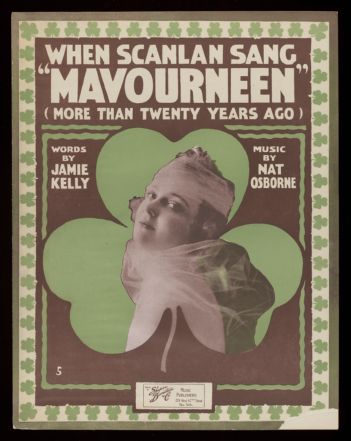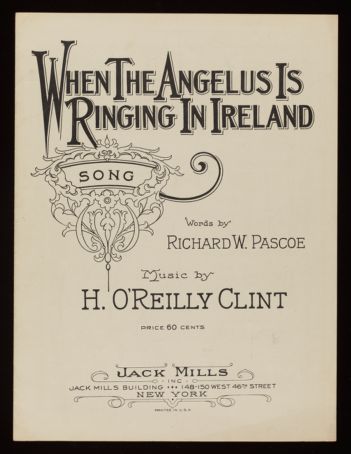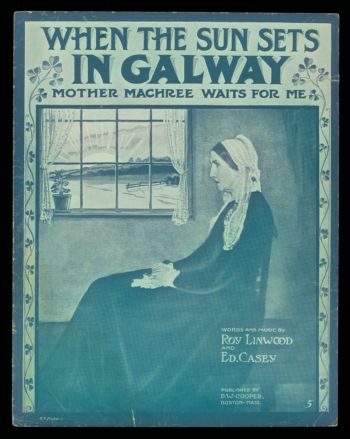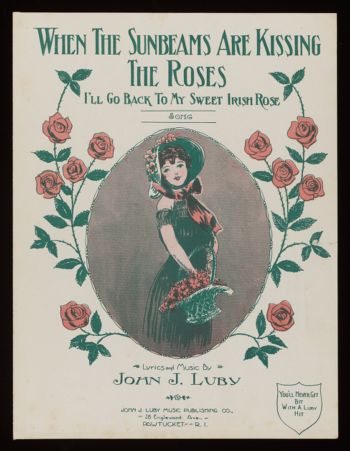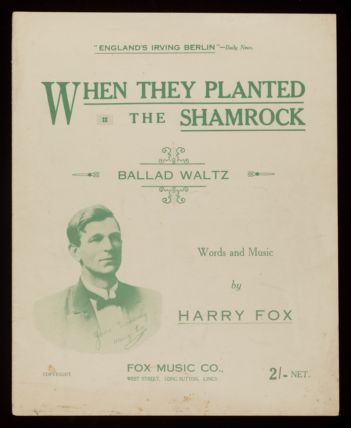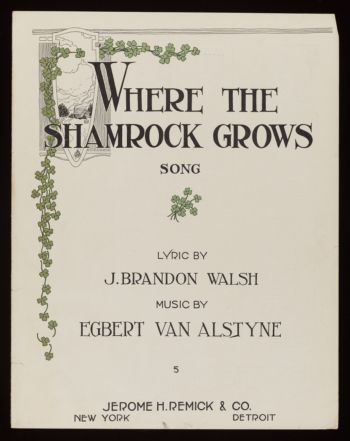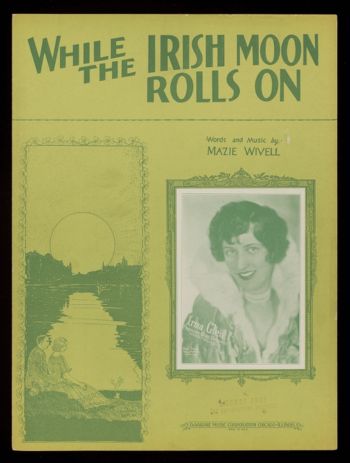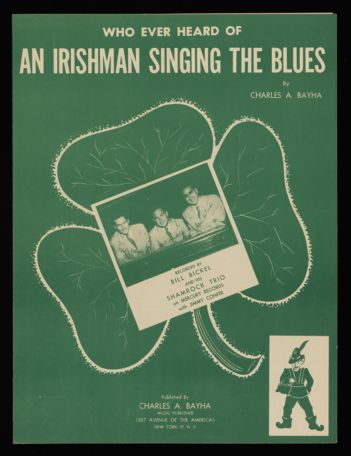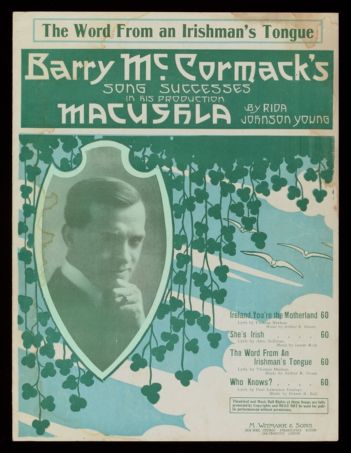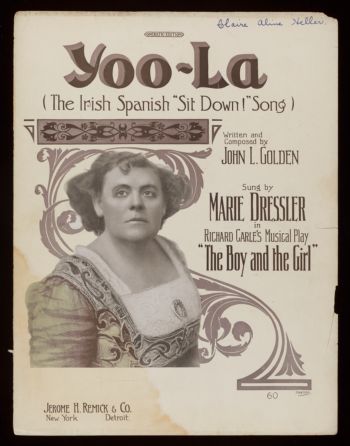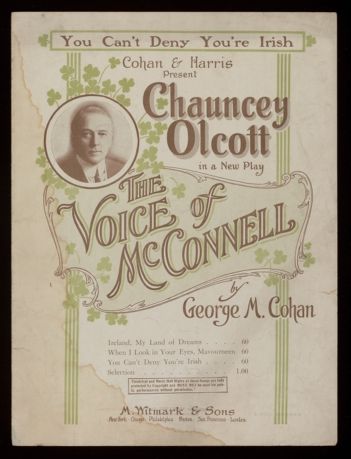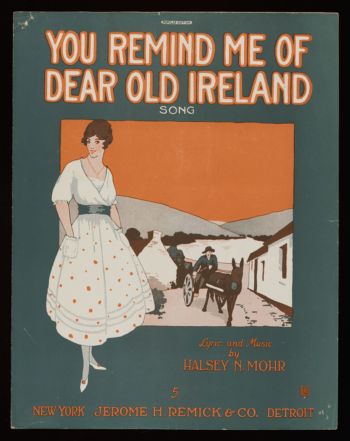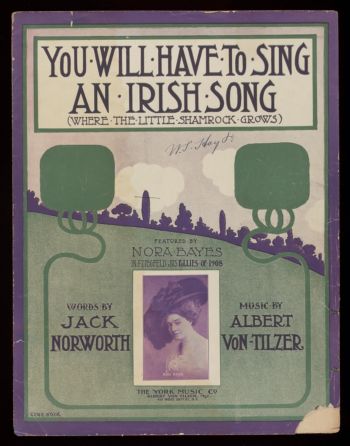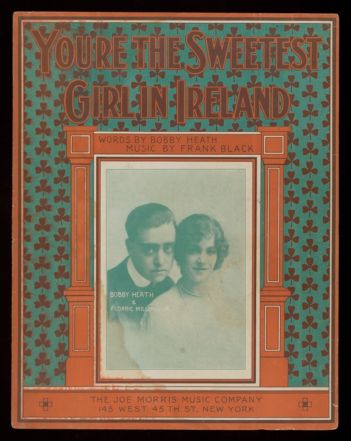Series I: Sheet Music (Irish), 1817-1995, inclusive
Language of Materials
Scope and Content Note
Series I: Sheet Music (Irish), 1817-1995 consists of sheet music focusing on songs about Ireland and the Irish published in the United States, particularly in New York City. The majority of the titles in this series were printed between 1860 and 1930, with a significant number of undated pieces. A variety of genres (from comic to sentimental) are documented, as well as a recurring cast of composers, lyricists, and publishers. Together, they offer a comprehensive look at what was an musical form of cultural expression and an extremely lucrative business between the American Civil War and the Second World War.
Among the men composing music for Irish-themed sheet music who are substantially represented in this series are David Braham (28 examples), Jerome Schwartz (17), Ernest R. Ball (16), and Harry Von Tilzer (14), in addition to Victor Herbert, Theodore F. Morse, Albert Von Tilzer, Max Hoffman, and Walter Scanlan. There are "Irish" lyrics penned by Edward Harrigan (27), William Jerome (21), Alfred Bryan (13), and Bartley Costello (13), as well as by Thomas Moore, Samuel Lover, George V. Hobart, Harry Pease, J. Keirn Brennan, and Stanley Murphy. George M. Cohan and Chauncey Olcott represent composers who were also lyricists.
The team of Harrigan and Hart aside, only Cohan and Olcott are familiar names. Nevertheless, one of the men defining the "Irish Colleen" through sheet music such as that in Series I was Alfred Bryan (1871-1958), a native of Ontario who moved to New York in 1905. Among the thousand songs he composed were "My Irish Girlie" (Box 28, Folder 31) and "Peg O'My Heart" (Box 32, Folder 18). His philosophy was simple: "the public wants something that sings well."
More than 1,000 songs resulted from the collaboration of lyricist William Jerome and composer Jean Schwartz, among them many of the most memorable Irish-American pieces of the Tin Pan Alley era. The son of Irish immigrants, William Jerome Flannery (1865-1932) was born in Cornwall-on-the-Hudson, New York. After stints as a dancer with McAvoy's Hibernicon and Barlow's Minstrels, he starred during the 1890s at Tony Pastor's Theatre on 14th Street and at E. F. Albee's Union Square Theatre in New York City. Shortly after the turn of the century, Jerome turned to songwriting, teaming up with Jean Schwartz (1878-1956), a native of Budapest who began his New York career demonstrating pianos for a department store. Their first Irish American hit was "Bedelia" (Box 3, Folder 31) in 1903, followed two years later by "My Irish Molly O" (Box 28, Folder 35).
Novelty and nostalgia dominate Series I, with the most popular themes taking love and emigration as their subjects; see, "The Day I Left Old Erin (For the Good Old U.S.A.)" (Box 6, Folder 22), "Sing an Irish Song To-Night (For Your Old Daddy)" (Box 35, Folder 12), or "3,121 Miles Away" (Box 1, Folder 1). Words were often used to convey "Irish" at a glance and the Tin Pan Alley composer who sprinkled his lyrics with well-known Irish place names — "The Tipperary Twirl" (Box 39, Folder 8), "My Little Cottage Home in Sweet Killarney" (Box 29, Folder 13), "I'm On My Way to Dublin Bay" (Box 15, Folder 21) — conjured up an image of a mythical land of green fields and quaint villages that bore little relation to contemporary Ireland.
"'Twas Only an Irishman's Dream" (Box 39, Folder 22) or "Wait till I Lay My Hands on McNally!" (Box 40, Folder 1) are examples of titles in the sentimental and comic Irish repertoire. Humorous songs based on now-outdated conceptions of ethnicity took up the controversial theme of the "amalgamation of races," usually depicted through musical examples about romance and marriage between the Irish and other ethnic groups written within a narrow time period at the turn of the twentieth century. There are six songs about Irish men romancing Native American maidens — such as "Minni-Ha-Ha-Donahue" (Box 26, Folder 10) — two depicting Irish-Asian alliances — "When Chu-Ching-San Weds Paddy McCann" (Box 40, Folder 12) and "My Little China Doll" (Box 29, Folder 12) — as well as those featuring Mexicans, African-Americans, Italian-Americans, and Jews, like 1925's "Kosher Kitty Kelly" (Box 23, Folder 3).
Sheet music cover illustrations that represent the Irish as simianized, such as "The Judge, He's-a-Irish Too!" (Box 21, Folder 6) and "Come Down, Mike Downs, Come Down" (Box 5, Folder 27). The lyrics of many songs in Series I stereotype the Irish and Irish-Americans with racial or prejudiced language and situations. Other songs incorporate terms of endearment from the Irish language like "mavourneen," "acushla," "astore," and "machree." Particularly interesting examples can be found in "Carrigdhoun" (Box 5, Folder 1) and "Let the Farmer Praise His Grounds" (Box 24, Folder 1).
Contemporary events are also reflected in the subject matter, especially Irishmen serving as soldiers with the American military. "The Wild Irish Boy" (Box 42, Folder 17), "Somewhere in France Dear Mother" (Box 36, Folder 11), and "The Army's Full of Irish" (Box 2, Folder 34) date from the First World War while "Johnny Doughboy's Found a Rose in Ireland!" (Box 21, Folder 2) was a 1942 hit for singer Kate Smith, the same year "Clancy's Gone and Joined the Army" (Box 5, Folder 11) was published.
The oldest sheet music in Series I is "Eveleen's Bower" (1817) and the most recent is "The Irish Wedding Song" (1995). Of political interest are "Far Away Ireland" (1986), which is dedicated to Ronald Reagan, complementing "When Ireland Takes Her Place among the Nations of the Earth" (1919), which is dedicated to Eamon de Valera. The bulk of the sheet music was published in the United States, with New York City dominant, but there are good samples from Boston, Chicago, and Philadelphia. Among the foreign publications, there are 142 examples from London — such as "The Eyes of Irish Blue" (1913) — and 14 from Dublin, including Percy French's "The Emigrant's Letter" (n.d.). Many of the pieces are in excellent condition, considering their great age, but the majority have frayed along the spine and have separated. Only the pieces "Her Danny" (Box 12, Folder 27), "Nora Machree" (Box 30, Folder 14), "Shadowland" (Box 34, Folder 12), and "Winging Your Way to Ireland" (Box 42, Folder 19) are incomplete or contain a possibly unrelated page.
Arrangement
The materials in this series are arranged alphabetically by song title, with the exception of materials from accession 2010-019, housed in Boxes 60-62 and Box Shared Tamiment 164, which were not arranged by an archivist and added to the end of the previously created alphabetized file listings.









